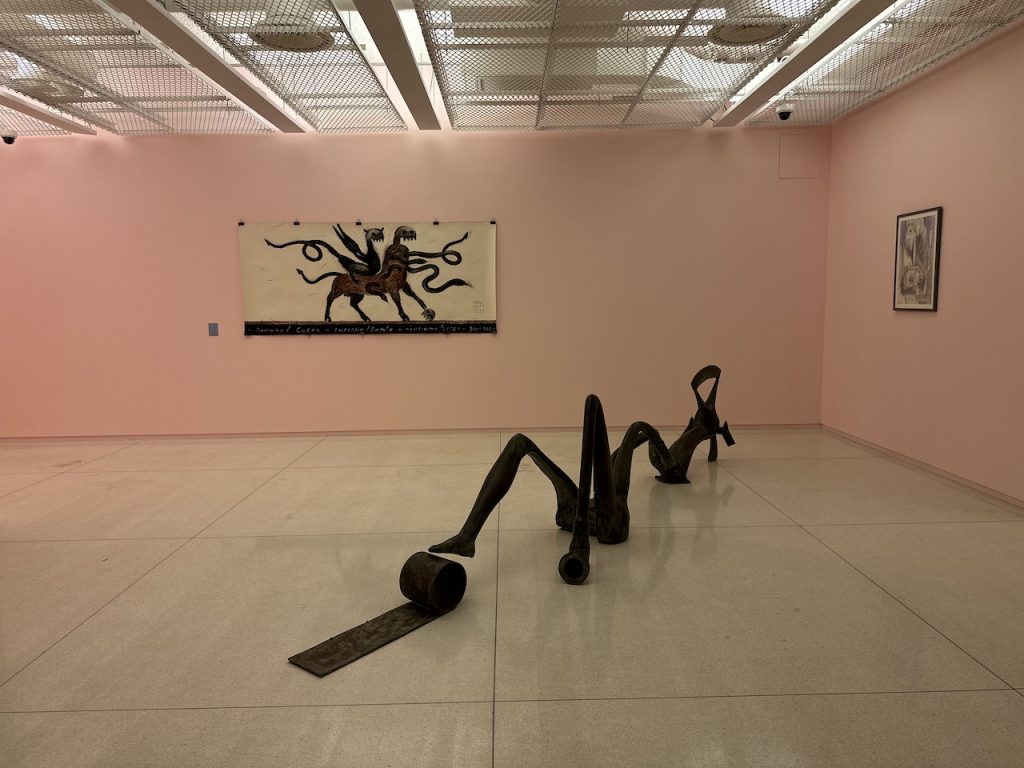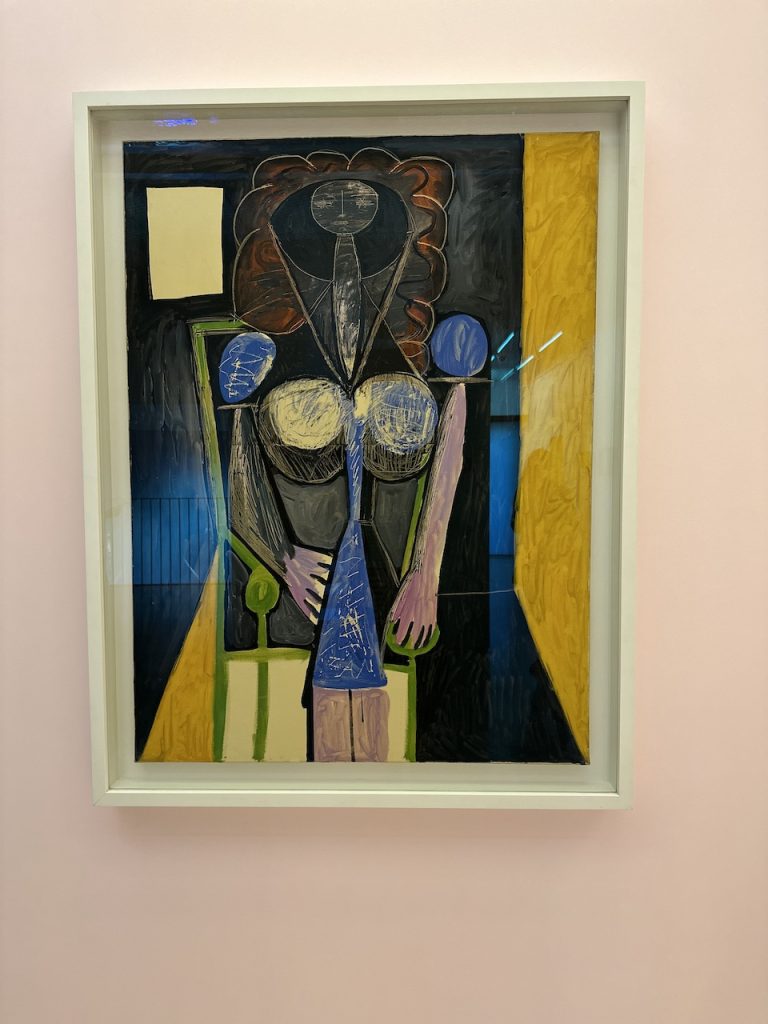:quality(80)/business-review.eu/wp-content/uploads/2023/07/Pablo-Picasso-MARE.jpeg)
Business Review delves into the intricate journey that brought Picasso’s iconic masterpieces to Romania and explores the profound impact of his art on the Romanian contemporary art scene with Erwin Kessler, curator of the groundbreaking exhibition titled “The Picasso Effect” and the director of the MARe Museum in Bucharest.
Could you walk us through the initial discussions and negotiations that took place to bring “The Picasso Effect” exhibition to Romania? What were the key factors that made this collaboration possible?
“The Picasso Effect” started out almost three years ago. My historical research on the influence of Western art on the Romanian art scene, which was emancipating out of Socialist realism around 1965, brought me closer to the October 1968 Picasso exhibition at the MNAR in Bucharest. It was a 1950-strong display of engravings, focused on Picasso’s works on paper from around the 1940s to the 1960s. There was an obvious political touch on that exhibition of 1968, which I was very interested in. In 2020 I approached Laurent Le Bon, the director of Musée national Picasso Paris (MnPP) and president of the Pompidou Centre in Paris with the proposal of an exhibition dedicated to the longstanding influence of Picasso on the local artworld from the 1960s onwards. He liked “The Picasso Effect”. The ambition was to refer to the 1968 exhibition while radically upgrading it, by exhibiting at MARe some major paintings and important drawings by Picasso from the collection of the MnPP. We started to work on the selection of Picasso works and that of Romanian artists. “The Picasso Effect” was included in the Picasso Celebration of 2023, the anniversary of 50 years since his passing. There are 42 exhibitions in famous museums across 8 countries, with Romania being the only Central and Eastern European country included. The collaboration was made possible by the excellent response of Le Bon and his team to the proposal we made and, furthermore, by the consistent support we received from the French diplomatic authorities in Romania, especially Ambassador Laurence Auer, who was an enthusiastic supporter of our endeavour.
Negotiating exhibitions of this magnitude often involves complex logistics. What were some of the logistical challenges that you encountered, and how were they addressed?
In order to host a Picasso exhibition, a museum should be top tier in matters of security, surveillance, and organisation. MARe submitted an enormous application folder with hundreds of pages dedicated to its facilities, surveillance (technical equipment, human resources, plan), security, lighting, climate technology, etc. Last year we had a visit from a delegation of firefighting and police experts from MISSA, the surveillance and security unit of the French Culture Ministry. Over two days, they scrutinised each and every aspect of our equipment and facilities, including the amount of water in the museum’s underground water tank, which would be needed for fire safety measures. They were satisfied with what they found and we could progress with our exhibition contract after receiving their approval. There is actually a very narrow margin for negotiation in matters of logistics. You must simply comply with the requirements. They are there in order to protect the works and the visitors, and this is our interest too.

How did you navigate the process of securing Picasso’s artworks for the exhibition, considering their historical significance and value?
It wasn’t easy at all, as the MnPP provided Picasso works to many of the 42 exhibitions across the world. This area was really a space for negotiation—I conceded an important early work from my primary selection, but instead I got two significant works from Picasso’s late years. As a backdrop, I want to note that the MnPP lent 16 of their Picasso paintings to 4 exhibitions in Spanish museums, whereas for our single exhibition in Bucharest they lent 14 relevant pieces. This reflects the importance given by the MnPP to The Picasso Effect exhibition at MARe.
Such exhibitions often require a substantial financial investment. Could you provide an overview of the budget for “The Picasso Effect,” including its funding sources and allocation?
The budget exceeded EUR 1.1 million. The shipment of the works, the insurance, the catalogue, the refurbishment of the museum, the extra human resources needed, and the whole communication cost a fortune. We’ve received generous funding from UniCredit Bank, but also from the Culture Ministry and the Bucharest Townhall, through ARCUB. Other companies have supported various elements of the exhibition, from the Picasso film programme taking place throughout the duration of the exhibition to the Picasso-themed children’s courses which will run between October and January.
Can you shed light on the economic impact that hosting such an exhibition can have on the local economy, including the art and tourism sectors?
Thanks to the far-reaching campaign we are developing around “The Picasso Effect”, we count on many foreign visitors, mainly from Germany, France, UK, and Austria, countries where our promotion will be visible. We also expect visitors from neighbouring countries, as “The Picasso Effect” will be the biggest art event in the Eastern European region for three months.

Negotiating the inclusion of Romanian artists alongside Picasso’s works must have presented its own set of challenges. How did you manage to strike a balance between these two aspects?
The idea was not to strike a balance, but to provide meaning (artistic, historical, political) through the insertion of Romanian artists. Their takes on Picasso are rich and diverse. From the imitation of stylistic and iconographic choices inspired by Picasso (especially by his early cubism) to the subversion of the political overtones of his communist allegiance and even to the mocking of Picasso or the reinterpretation of his works and his figure in a totally spiritual direction, an entire realm of dazzling Picassian matters opens up through the contributions of the Romanian artists. Their input is frequently critical and extremely creative: besides paintings and drawings by Romanian artists, there will also be sculptures, installations, ceramics, photography. This will turn the exhibition into an authentic and dense experience of a historical journey through more than 50 years of Picasso’s fruitful interference with the Romanian artworld.
With the hosting of “The Picasso Effect” exhibition, how do you believe Romania’s status in the global contemporary art scene is evolving?
“The Picasso Effect” is in itself a totally unique event. Never before throughout the 20th and the 21st centuries has Romania hosted such a huge display of masterpieces by the most important international modern artist. This will automatically enhance the status of the Romanian museum system in our society. It will stamp a local landmark. At the same time, it is an instance of professional competence on an international level, as the local museum system will thus show its ability to conceive and cope with such a complex endeavour, and maybe soon we will see similarly ambitious exhibitions dedicated to major names in art, such as Monet, Kandinsky or Warhol, negotiated with other major foreign museums.
How does this exhibition reflect Romania’s ability to bridge the gap between its rich cultural heritage and the contemporary art world?
There is no such thing as a gap between our heritage and the contemporary art world. Many contemporary Romanian artists in fact rely upon the heritage to build up or develop their art. From the influence exerted by folklore onto many painters (not only Tuculescu, but he was a typical case) to Byzantine painting and its influence on the neo-Orthodox art of today (the Prologue group, for example), and from the influence exerted by Picasso from the 1960s until today to the neo-conceptualist appropriation of the local folk tradition in the works of Mircea Cantor, the cultural heritage is a treasure trove that never gets overlooked by art today.

For international visitors experiencing Romanian contemporary art for the first time through this exhibition, what do you hope they will take away and remember about Romania’s place in the world of art?
This is one of the explicit targets of our exhibition: to insert the Romanian artists in the mindset of the foreign public, as conscious and active participants in the concert of modern and contemporary art, able to not only assimilate and develop the influence of Picasso and of the larger modernist Paris School, but also to make critical inroads into their subject matters.
How do you see the inclusion of Romanian artists enriching the overall narrative of the exhibition and contributing to the dialogue between Picasso’s work and contemporary Romanian art?
I count on the visitors’ open minds, on their ability to distinguish between influence, imitation, and subversion, to appreciate true masterpieces by Romanian artists alongside the consecrated masterpieces of Picasso, but also to accept and enjoy the mockery of many of the very ironic, sarcastic takes on Picasso’s art. The irony, the impenitent (frequently self-) derision that is typical of Romanian artists is one of the specific vehicles of creative appraisal and the public should perceive the dialogue behind the fun.
For those who may be less familiar with Picasso’s art, what can they expect to discover and learn from this exhibition?
There are several world-renowned masterpieces by Picasso in this exhibition, including the 1937 Portrait of a woman with crossed arms, which was recently viewed on film by many, in the recently released Oppenheimer. Besides that, there are many other major works from Picasso’s entire career, from 1908 until 1972, covering all his periods and subjects. With its 46 works, “The Picasso Effect± could be seen as a perfect introduction to the achievements of Pablo Picasso.
The event takes place between September 27 and January 8, 2024, and tickets are available online at www.tickets.mare.ro.



:quality(80)/business-review.eu/wp-content/uploads/2024/07/VGP-Park-Timisoara_-8thbuilding_iulie-24.jpg)



:quality(80)/business-review.eu/wp-content/uploads/2024/06/22C0420_006.jpg)

:quality(80)/business-review.eu/wp-content/uploads/2024/06/COVER-1-4.jpg)



:quality(80)/business-review.eu/wp-content/uploads/2024/06/br-june-2.jpg)
:quality(50)/business-review.eu/wp-content/uploads/2024/07/America-House-Offices-Bucharest-Fortim-Trusted-Advisors.jpg)
:quality(50)/business-review.eu/wp-content/uploads/2024/07/BeFunky-collage-33-scaled.jpg)
:quality(50)/business-review.eu/wp-content/uploads/2024/07/BeFunky-collage-32-scaled.jpg)